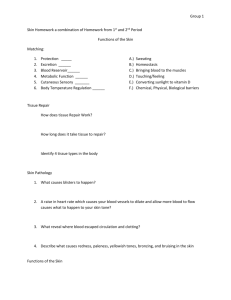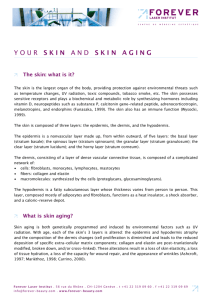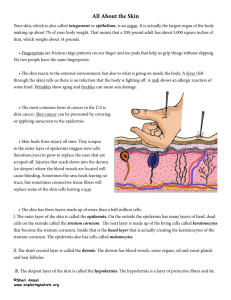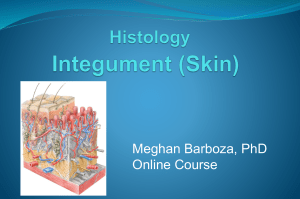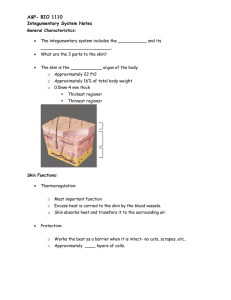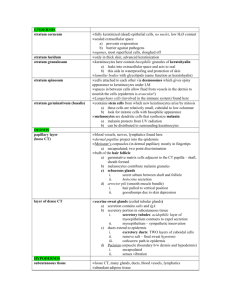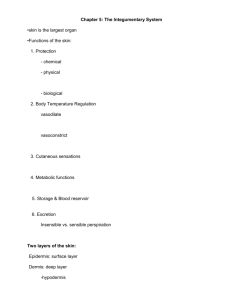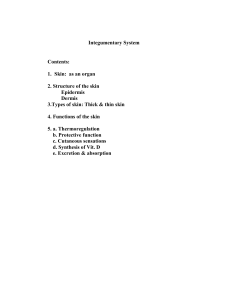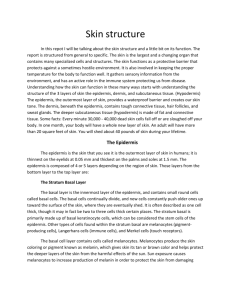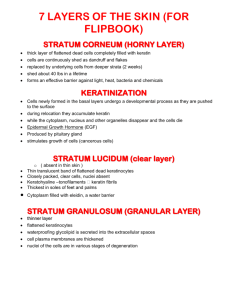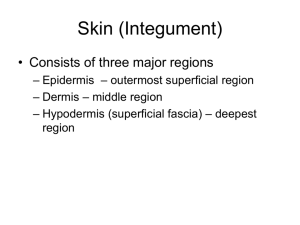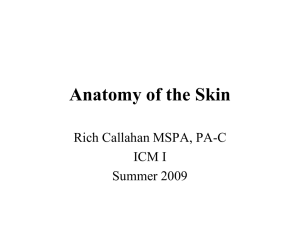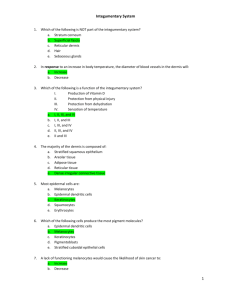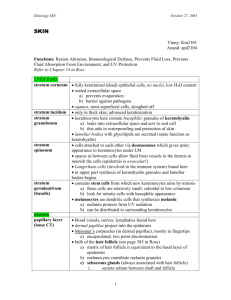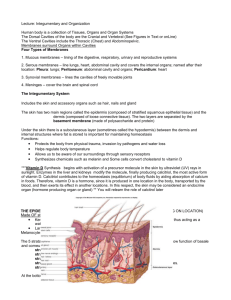CLOZE Notes Integumentary System Introduction
advertisement
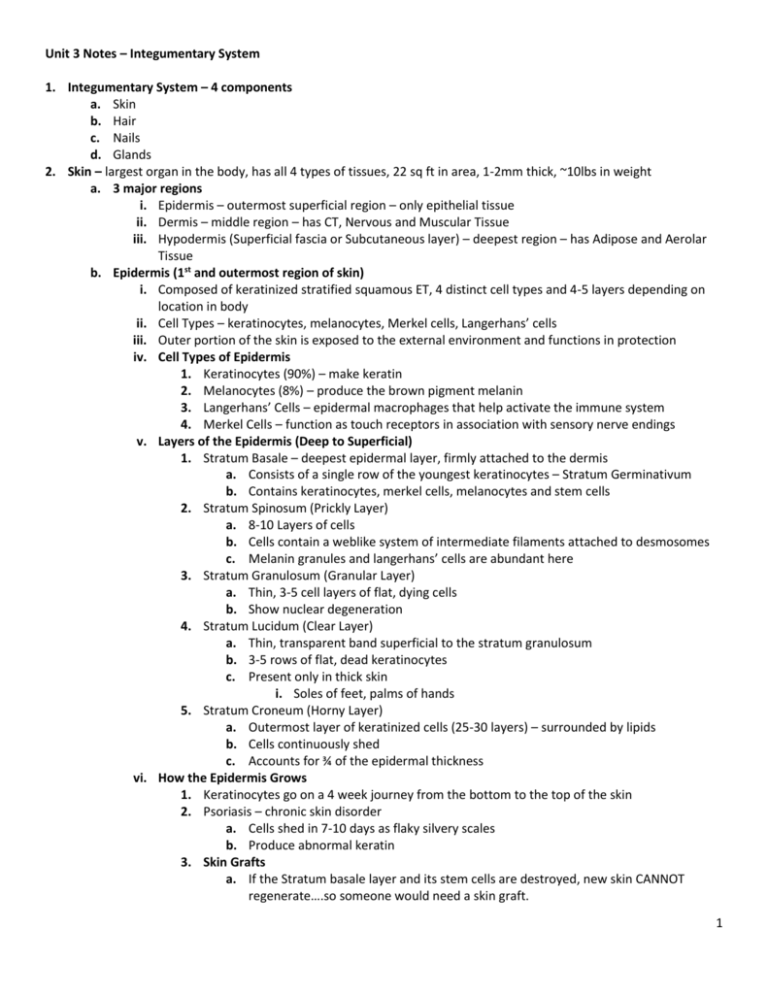
Unit 3 Notes – Integumentary System 1. Integumentary System – 4 components a. Skin b. Hair c. Nails d. Glands 2. Skin – largest organ in the body, has all 4 types of tissues, 22 sq ft in area, 1-2mm thick, ~10lbs in weight a. 3 major regions i. Epidermis – outermost superficial region – only epithelial tissue ii. Dermis – middle region – has CT, Nervous and Muscular Tissue iii. Hypodermis (Superficial fascia or Subcutaneous layer) – deepest region – has Adipose and Aerolar Tissue b. Epidermis (1st and outermost region of skin) i. Composed of keratinized stratified squamous ET, 4 distinct cell types and 4-5 layers depending on location in body ii. Cell Types – keratinocytes, melanocytes, Merkel cells, Langerhans’ cells iii. Outer portion of the skin is exposed to the external environment and functions in protection iv. Cell Types of Epidermis 1. Keratinocytes (90%) – make keratin 2. Melanocytes (8%) – produce the brown pigment melanin 3. Langerhans’ Cells – epidermal macrophages that help activate the immune system 4. Merkel Cells – function as touch receptors in association with sensory nerve endings v. Layers of the Epidermis (Deep to Superficial) 1. Stratum Basale – deepest epidermal layer, firmly attached to the dermis a. Consists of a single row of the youngest keratinocytes – Stratum Germinativum b. Contains keratinocytes, merkel cells, melanocytes and stem cells 2. Stratum Spinosum (Prickly Layer) a. 8-10 Layers of cells b. Cells contain a weblike system of intermediate filaments attached to desmosomes c. Melanin granules and langerhans’ cells are abundant here 3. Stratum Granulosum (Granular Layer) a. Thin, 3-5 cell layers of flat, dying cells b. Show nuclear degeneration 4. Stratum Lucidum (Clear Layer) a. Thin, transparent band superficial to the stratum granulosum b. 3-5 rows of flat, dead keratinocytes c. Present only in thick skin i. Soles of feet, palms of hands 5. Stratum Croneum (Horny Layer) a. Outermost layer of keratinized cells (25-30 layers) – surrounded by lipids b. Cells continuously shed c. Accounts for ¾ of the epidermal thickness vi. How the Epidermis Grows 1. Keratinocytes go on a 4 week journey from the bottom to the top of the skin 2. Psoriasis – chronic skin disorder a. Cells shed in 7-10 days as flaky silvery scales b. Produce abnormal keratin 3. Skin Grafts a. If the Stratum basale layer and its stem cells are destroyed, new skin CANNOT regenerate….so someone would need a skin graft. 1 i. Skin Graft – covering an open wound with a piece of healthy skin 1. Autograft – from self 2. Isograft – from your twin 3. Autologous skin – transpant of a patient’s skin that was grown in a culture c. Dermis – second major skin region, contains strong and flexible CT i. Has collagen and elastic fibers, fibroblasts, macrophages and adipocytes ii. Has 2 layers – Papillary and Reticular iii. Contains Hair Follicles, Glands, Nerves and Blood Vessels iv. Papillary Layer of the Dermis – most superior 1. Areolar CT with collagen and elastic fibers 2. Its superior surface contains peglike projections called dermal papillae 3. Dermal papillae contain capillary loops (Meissner’s Corpuscles) and free nerve endings v. Reticular Layer of the Dermis – inferior to the Papillary Layer 1. Accounts for ~80% of the thickness of skin 2. Collagen fibers are present – add strength and resiliency to the skin 3. Elastin fibers are present – provide stretch-recoil properties d. Hypodermis – 3rd region of skin i. Subcutaneous layer deep to the skin ii. Composed of Adipose and Areolar CT iii. 2
